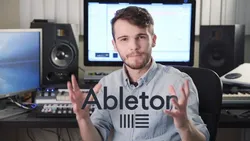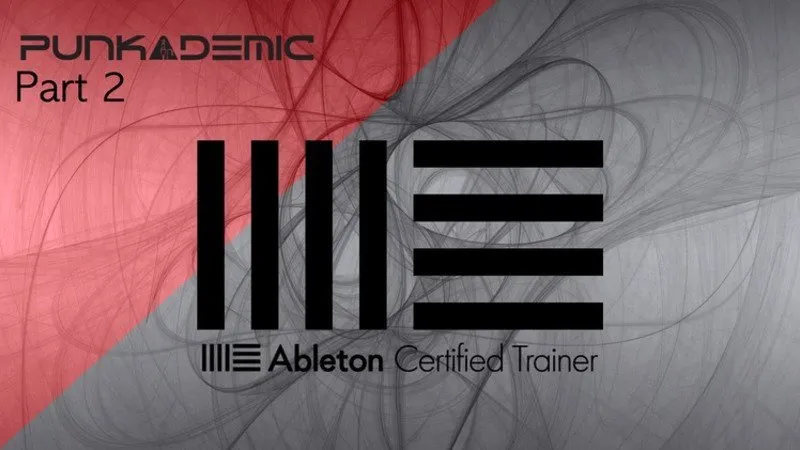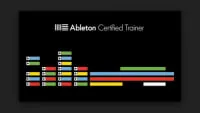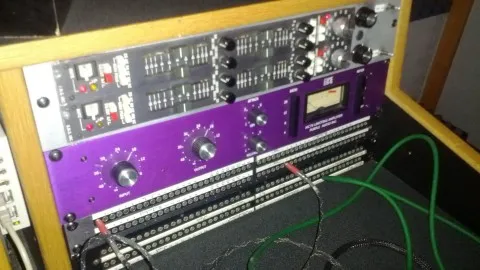
Mixing in Ableton Live: A Creative Approach 
This course provides an in-depth look at how to use Ableton Live 9's audio effects to create professional-level mixes. Students will learn how to analyze, critique, fix, and enhance all elements of their songs, as well as gain an understanding of the creative possibilities available. ▼
ADVERTISEMENT
Course Feature
![]() Cost:
Cost:
Free Trial
![]() Provider:
Provider:
Skillshare
![]() Certificate:
Certificate:
Paid Certification
![]() Language:
Language:
English
![]() Start Date:
Start Date:
On-Demand
Course Overview
❗The content presented here is sourced directly from Skillshare platform. For comprehensive course details, including enrollment information, simply click on the 'Go to class' link on our website.
Updated in [February 21st, 2023]
Learners can learn a variety of topics from this course, Mixing in Ableton Live: A Creative Approach. Firstly, they will gain an understanding of the tools and techniques used in music production, such as volume automation, reverb, panning, eqing and compression. Secondly, they will learn how to analyse, critic, fix, and embellish all parts of their songs. Thirdly, they will learn how to combine these tools and when not to use them. Lastly, they will gain the skills to mix audio stems and their own projects, and develop their mixes to professional standards. This course is suitable for Ableton users, but the concepts explained are applicable in any other DAW. Pre-requisites include knowledge of the basic functionality in Ableton Live or any other DAW, and familiarity with the terms: spectrum, frequency, transient, fundamental, harmonics, mono and stereo.
[Applications]
Upon completion of this course, students should be able to apply the concepts learned to their own projects. They should be able to analyse, critic, fix, and embellish their mixes using the audio effects included in Ableton Live 9. Students should also be able to identify when to apply these tools, how to combine them, and when not to use them. Additionally, students should be able to apply the concepts learned to any other DAW.
[Career Paths]
1. Audio Engineer: Audio engineers are responsible for recording, mixing, and mastering audio for a variety of projects, such as music, films, television, and video games. They use a variety of tools and techniques to create the desired sound, including equalization, compression, and reverberation. As technology advances, audio engineers are increasingly using digital tools and software to create and manipulate sound.
2. Music Producer: Music producers are responsible for overseeing the production of music, from the initial recording process to the final mix. They work with artists to create the desired sound, and are responsible for selecting the right instruments, sounds, and effects to create the desired sound. They also work with engineers to ensure that the sound is properly recorded and mixed. As technology advances, music producers are increasingly using digital tools and software to create and manipulate sound.
3. Sound Designer: Sound designers are responsible for creating and manipulating sound for a variety of projects, such as films, television, video games, and other multimedia projects. They use a variety of tools and techniques to create the desired sound, including equalization, compression, and reverberation. As technology advances, sound designers are increasingly using digital tools and software to create and manipulate sound.
4. Music Mixer: Music mixers are responsible for mixing and mastering audio for a variety of projects, such as music, films, television, and video games. They use a variety of tools and techniques to create the desired sound, including equalization, compression, and reverberation. As technology advances, music mixers are increasingly using digital tools and software to create and manipulate sound.
Pros & Cons

Informative

Organized lessons

Steady pace

Great for beginners and refreshers

Demonstrates use of stock effects

None mentioned
Course Provider

Provider Skillshare's Stats at AZClass
Discussion and Reviews
0.0 (Based on 0 reviews)
Explore Similar Online Courses

Grilling Fundamentals: Cooking Chicken Over Live Fire

Affinity Designer Quick Start

Python for Informatics: Exploring Information

Social Network Analysis

Introduction to Systematic Review and Meta-Analysis

The Analytics Edge

DCO042 - Python For Informatics

Causal Diagrams: Draw Your Assumptions Before Your Conclusions

Whole genome sequencing of bacterial genomes - tools and applications

Ableton Live 10 Part 2: Recording & Warping

Producing Drums with Ableton Live and Drum Rack


Start your review of Mixing in Ableton Live: A Creative Approach